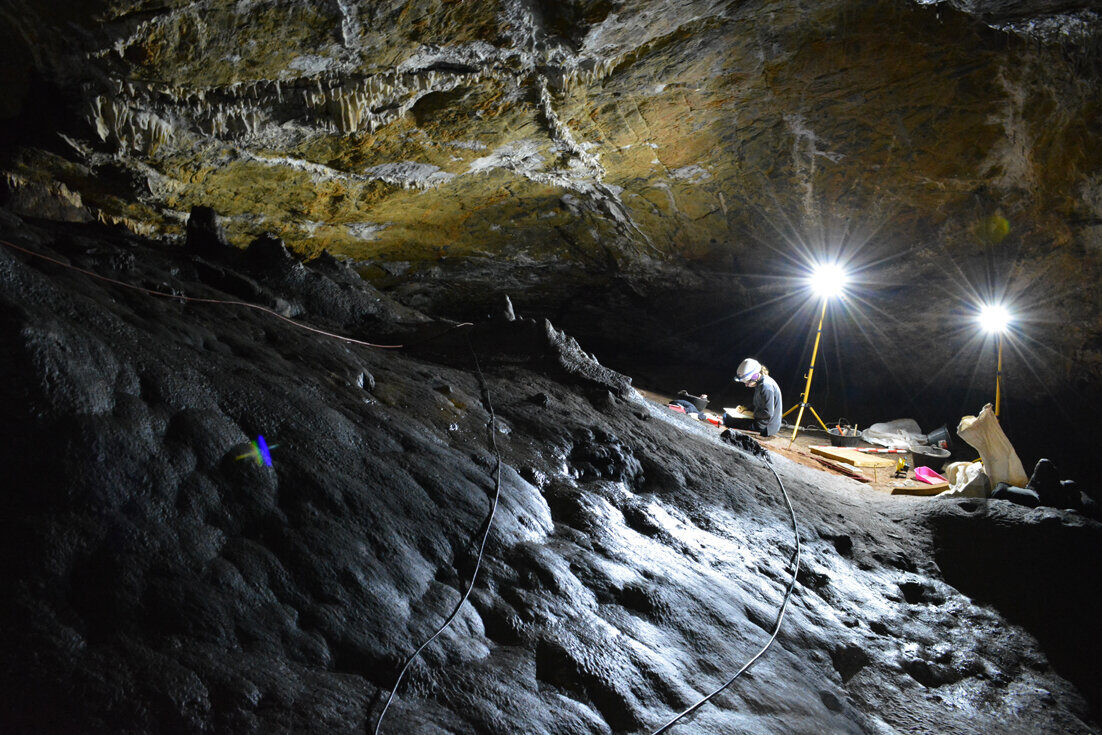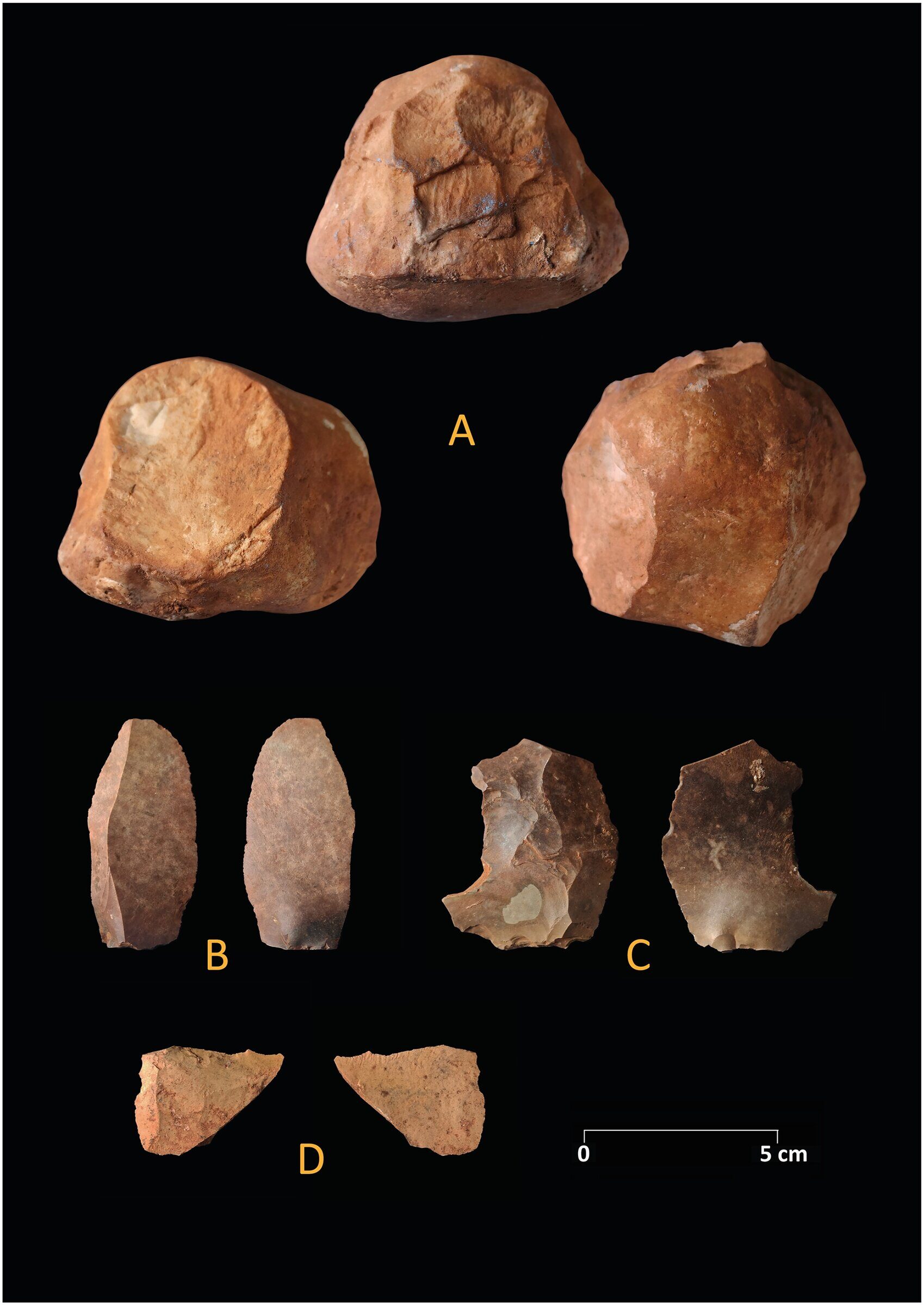
Cueva de Ardales, a cave in Málaga, Spain, is famous for containing more than 1,000 paintings and engravings made by prehistoric people, as well as artifacts and human remains. However, the nature of human usage of this cave has not been well-understood. In this study, the authors present the results of the first excavations in this cave, which shed light on the history of human culture in the Iberian Peninsula.
A combination of radiometric dating and analysis of remains and artifacts within the cave provide evidence that the site's first occupants were likely Neanderthals more than 65,000 years ago. Modern humans arrived later, around 35,000 years ago, and used the cave sporadically until as recently as the beginning of the Copper Age. The oldest rock art in the cave consists of abstract signs such as dots, finger tips, and hand-stencils created with red pigment, while later artwork depicts figurative paintings such as animals. Human remains indicate the use of the cave as a burial place in the Holocene, but evidence of domestic activities is extremely poor, suggesting humans were not living in the cave.

The authors add: "Our research presents a well-stratified series of more than 50 radiometric dates in Cueva de Ardales that confirm the antiquity of Paleolithic art from more than 58,000 years ago. It also confirms that the cave was a place of special activities linked to art, as numerous fragments of ochre were discovered in the Middle Paleolithic levels."



And it ain't Art, a labelling exercise by those who have you believe in such rubbish.